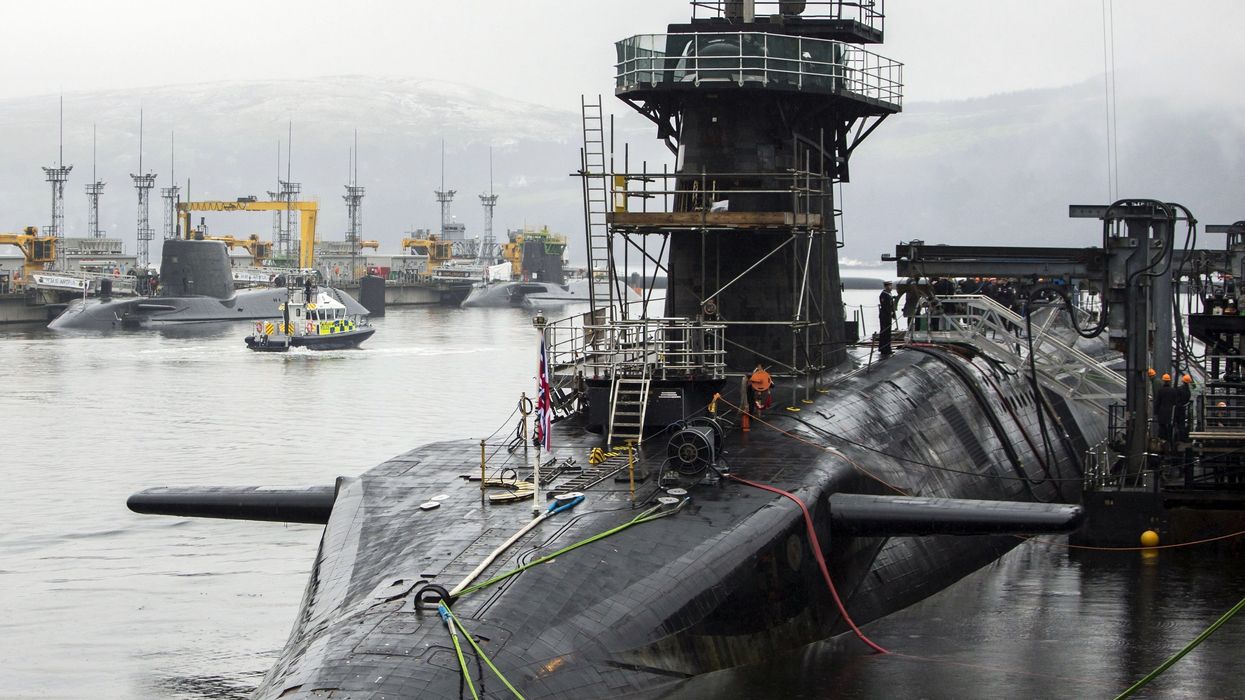Our nuclear deterrence works and Russia knows it, says Tobias Ellwood

A fleet of four Vanguard submarines are the only means of launching Britain's nuclear deterrent | PA
Tobias Ellwood MP gives his verdict on the state of Britain's defences
Don't Miss
Most Read
Latest
Military-speak is the language those in uniform use to keep civilians guessing as to what is really going on.
This week’s written statement to Parliament about HMS Vanguard was a classic. Apparently during a DASO (Demonstration and Shakedown Operation) an ‘anomaly’ occurred which was event specific.
When it comes to nukes – no news is good news. Our nuclear deterrent quietly operates every hour of every day in the form of a giant 150m long nuclear-powered submarine, silently loitering in one of the world’s oceans, waiting for authorization from the Prime Minister to launch.
Understandably the UK remains deliberately ambiguous about precisely when, how, and at what scale we would use our nuclear weapons so as to complicate the calculations of a potential aggressor. So, when the Sun Newspaper reports that a 58 tonne Trident missile has misfired, we all look up.
Before considering what actually happened its worth placing our nuclear capability into context. We are one of nine countries in the world to possess nuclear weapons.
It’s the backbone of our national defence architecture and has been allowing us to sleep at night by offering 24/7 top-cover since 1969. It is our ultimate security insurance policy.
WATCH: Tobias Ellwood on UK nuclear test failure
The components that make up our deterrent comprise of both the platform (in the form of the vanguard class submarine) the Trident II D5 (three stage) missile and the Holbrook warhead.
We make the subs (soon to be replaced by a new Dreadnought class) and the warhead. The missile is US made and stocked in a communal pool with the United States. This whole package is one of the most complex inventions ever developed by humankind. Designed not only to stealthily operate in an alien environment, and fire an extremely advanced and complicated weapon system, they are also built to endure a nuclear holocaust. The tests they must pass before cleared for operations are vigorous indeed.
Which brings us to the ‘anomaly’ that took place at the end of January.
HMS Vanguard is the lead boat of her class and was recently put back into the water after a £500 million seven year life extension programme. Originally built to last 25 years, the Vanguard class submarines are all undergoing a series of life extension programmes.
The Demonstration and Shakedown Operation is a routine operation which takes place when a ballistic missile submarine completes its deep maintenance period. It involves a comprehensive series of complex weapons system and sub-system tests, assessing the performance of the submarine and its crew. Both the submarine and crew were successfully certified and will soon re-join the other nuclear subs in our fleet.
The final part of the operation involved a test fire of an unarmed Trident II D5 missile. The ‘event specific’ event which saw the first stage of the missile fail to ignite suggests aspects of the test itself caused the malfunctioning of the missile. Understandably these details are not shared with the public.
There are no implications for the reliability of the wider Trident missile systems and stockpiles. And whilst there’s likely to be a serious review of what happened, it would be wrong to assume our ability to fire our nuclear weapons (should the circumstances arise!) is somehow in jeopardy. That said, I am sure another test might be arranged in the near future – perhaps using modified testing equipment!
It’s absolutely in the nation’s security interests to remain a nuclear armed power. We’ve entered another dark chapter in our history as state-on-state aggression returns and a new axis of authoritarianism in the form or China, Russia and Iran, openly challenge our rules based order.
The nuclear arms race defined the Cold War competition between the West and Soviet Union. But back channels behind the scenes and various arms control agreements ensured this rivalry did not escalate to nuclear war. Those assurance mechanisms have all but disappeared as international treaties lapse, and our adversaries rebuild their nuclear arsenals. I predict a low yield tactical nuclear bomb will be fired in anger, during the next decade.
Such weapons take out a city block rather than a city but nevertheless a dangerous threshold for humanity to cross. This is why we retain our nuclear deterrence at high readiness.
Let’s not over-interpret this recent missile test. The Royal Navy still has our backs. Which is wise, because deep fissures have re-emerged in the US-Russia relationship in recent years, raising once again the spectre of a nuclear arms race.
I know that the government has absolute confidence that the UK’s deterrent remains effective, dependable, and formidable.
That is why we are continuing to invest in the next generation of Dreadnought Class ballistic missile submarines, extending the life of the Trident missile and replacing the warhead, to keep us safe for decades to come.
Sustaining the deterrent and renewing it for the future is a truly national endeavour. It is the culmination of the dedicated efforts of thousands of people, not just in the Ministry of Defence but at locations across the country, from the nuclear laboratories at the Atomic Weapons Establishment in Berkshire to the BAE Systems dockyards at Barrow-in-Furness.
Therefore, one misfire should not lead us to doubt our security or our capacity as a nuclear power. Our continuous at-sea deterrence posture has been maintained for nearly 55 years by generations of highly dedicated and professional submariners. We owe them, and their families, our thanks for their sacrifices and outstanding service, which is often out of sight but should never be out of mind.
It is not going to end.










